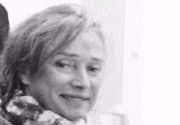

|
 Niki de Saint Phalle |
|
|
born on October 29, 1930 in Neuilly-sur-Seine Niki de Saint Phalle became famous around the world with her cheerful, voluminous "Nana" figures made of colourfully painted polyester. With these, the California-based artist succeeded in finding a modern metaphor for what it means to be a woman today. "My first exhibition with Nanas was called Nana Power. For me, they were the symbol of a cheerful, liberated woman. Today, after nearly twenty years, I see them differently. I see them as heralds of a new matriarchal era, which I believe is the only answer." The path to becoming an artist was not an easy one for Catherine Marie-Agnès Fal de Saint Phalle. She is born as the second of five children in Neuilly-sur-Seine near Paris. Her parents are the French banker André Marie Comte de Saint Phalle and his wife Jeanne Jacqueline, née Harper. The French-American background and the corresponding varying lifestyles determine the thoughts of Marie-Agnès, alias Niki. As a result of the fact that her father lost his entire fortune during the stock market crash of 1929, Niki and her older brother live for three years with their grandparents in Nièvre, France. In 1933, the family moves to Greenwich, Connecticut, and spends the summers at Château Filerval in France, which belongs to Donald Harper, the maternal grandfather. In 1937, the family moves to New York, where Niki attends first the convent school Sacred Heart, and later the Brearly School. She eventually graduates from the girls' school Old Field School in Maryland. When she is 18 years old, she marries Harry Mathews and moves with him to Cambridge, Massachusetts. While her husband studies music at Harvard University, Niki begins to paint and experiments with various materials. In addition to this, from 1948 until about 1955, she also works as a photographic model for "Vogue", "Life", "Harper's Bazaar", "Elle" and other French and American magazines. In April 1951, her daughter Laura is born. A few years later, the family decides to move to Paris, where Niki studies theatre science and attends acting school. Her husband continues his music studies and later becomes a writer. In 1953, Niki suffers from a nervous breakdown in Nice and is treated in a hospital - with electroshocks and psychiatric drugs. This personal catastrophe was an occasion for Niki to rethink her life's plans and liberate herself from the constraints of her bourgeois upbringing. A career as an artist seems to Niki to be the only real way out. In Paris, Niki meets not only the Swiss artist couple Eva Aeppli and Jean Tinguely, but also the American painter Hugh Weiss, who encourages her to remain true to her autodidactic painting style. Niki moves with her family to Deya, Majorca, where her son Philip is born in 1955. In 1956, she has her first solo exhibition in St. Gallen with plaster reliefs and material assemblages. In 1960, she is divorced from Harry Mathews. Niki lives and works from this time on together with Jean Tinguely. In 1965, the first "Nanas" are exhibited in the Galerie Iolas in Paris. They are in no way seen by everyone as cheerful. On the contrary, critics label the seemingly lively and wildly dancing feminine figures with attributes such as "aggressive", "satirical" and "feminist". The "Giant Nana" realised in Stockholm one year later was even described as the "largest whore in the world". The work - titled "Hon - en katedral" (She - A Cathedral) - lied there with thighs spread open, offering visitors entry through her vagina. In spite of all the critics and sceptics, the daughter of a good, bourgeois family was triumphantly successful with her controversial art. The "shooting star with a marginal trajectory within the universe of peripheral existence" (Pierre Restany) has been honoured by more than just countless group and solo exhibitions around the world. With her popular success, she clearly outshines not only her male artist colleagues among the "Nouveau Réaliste". Today, the joyous works of Niki de Saint Phalle are among the most sought after objects on the international art market. Selected Solo Exhibitions: 1980 Niki de Saint Phalle - Retrospective. Centre Georges Pompidou, Paris. 2001 Niki de Saint Phalle - "Le Fête". Tinguely-Museum, Basle. |